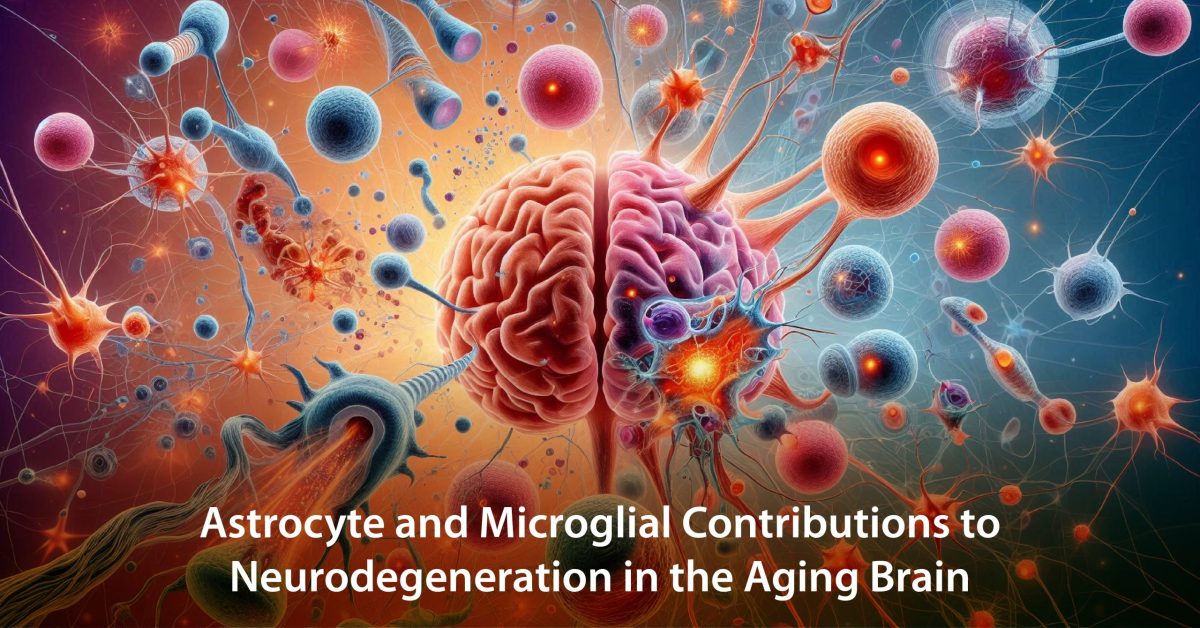Introduction
Aging is a biological process that occurs at every cellular, tissue, and organic level in living organisms, including the human brain. One of the more devastating effects of aging is the susceptibility of the CNS not only to such diseases as Alzheimer’s, Parkinson’s, and other forms of dementia but also to any pathology in which CNS injury may prove lethal. Two important actors in the aging brain are astrocytes and microglia, which are glial cells, and although they are not neurons, they play a vital role in the health of the brain and the nervous system in general. Though these changes occur during the deterioration of neurogenic potential with the aging of the brain, astrocytes and microglia contribute to neurodegeneration. In this article, the author looked at how astrocytes and microglia, which are referred to as the brain’s “glue cells,” change with age and how this triggers neurodegenerative diseases.
Astrocytes: Guardians Turned Contributors to Neurodegeneration
Astrocytes are the most numerous glial cells in the CNS; they are involved in the support of neurons, regulation of blood flow, and formation of the blood-brain barrier. In their positions, astrocytes have been known to contribute to the removal of neurotransmitters from the synaptic cleft, supply nutrients to neurons, and regulate synapse transmission. Nevertheless, normal astrocytes in the aging brain look different morphologically, functionally, and physiologically from the youthful ones; these changes show that the astrocytes function abnormally.
A noteworthy feature among the ultrastructural modifications observed within aged astrocytes is a failure to regulate intracellular ion homeostasis. Astrocytes in the aging brain are characterized by an enlargement of the cell soma and the thinning and retraction of processes, which can limit the cells’ ability to communicate with neurons or other astrocytes. This hypertrophy is coupled with up-regulation of glial fibrillary acidic protein (GFAP), a marker of reactive astrocytes. Reactive astrocytes are capable of releasing inflammatory cytokines and chemokines, which increase neuroinflammation and help in the progression of neurodegenerative disorders.
This finding can be further supported by the ability of astrocytes to control the cerebral oxidative stress in the CNS. Astrocytes have antioxidant capabilities within the brain, and it has been established that when these cells age, they are unable to provide the normal levels of antioxidant protection they used to; therefore, they allow increased levels of oxidative stress, which is pro-neuronal damage. An increase in ROS production and the ability of astrocytes to scavenge these toxic molecules may enhance neuronal death and worsen neurodegeneration. Furthermore, reactive astrocytes display a defective function of glutamate uptake, which gives rise to excitotoxicity or the neuropathological frustration that results from excessive accumulation of glutamate that is toxic to neurons.
Astrocytes also change the ways they interact with other glial cells, particularly microglia. With age, changes in the crosstalk between astrocytes and microglia may destabilize the homeostasis needed for physiological CNS function. For example, astrocytes can secrete factors that can promote microglial activation or have an inhibitory effect, thus acting as moderators of inflammation in the brain. Dysfunctional communication of this nature is seen as a substantial element of the neurodegenerative cascade seen in aging.
